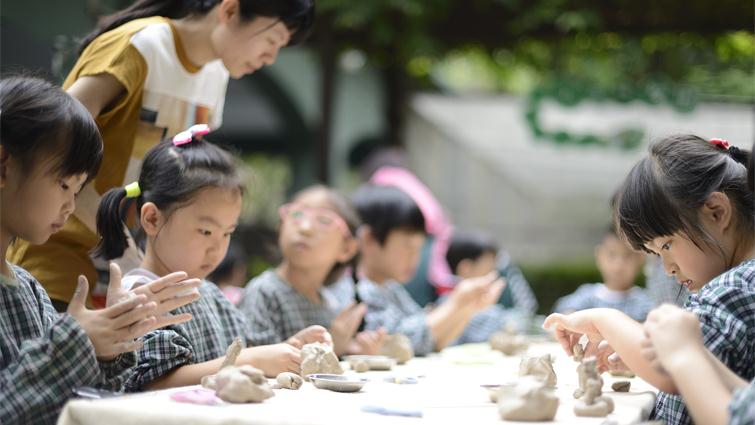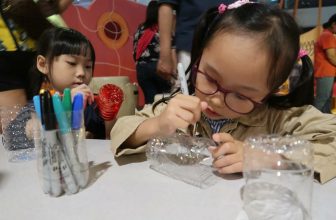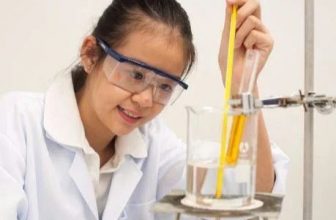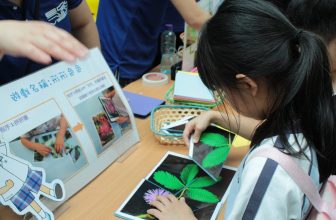

Maker centers and self-builder bases across Taiwan have sprung up. Among them, the new literacy of “STEM” is connected, that is, knowledge in the fields of Science, Technology, Engineering, and Mathematics. Solving problems in life through hands-on practice, as the basis for innovation and invention, has become a new wave of learning in Taiwan. But looking around, all centers of 3D printing machines, laser cutting and other equipment, behind the new technology, seem to lack more detailed processing, and the finished product is often very innovative, but lacks aesthetics.
John Maeda, the former dean of the Rhode Island School of Design in New York, was the first to speak out about the new education from “STEM” to “STEAM”, adding the importance of Art (visual performance, language art, design), and integrating art into science and technology education , In order to express more unique human emotions and creativity in technological innovation.
Tang Fumei, the founder of Taichung Four Seasons Art, who was the first to promote the “Art Maker” course in pre-school education in Taiwan, also said that if the “STEAM” hands-on maker course is skillfully used, the results will be great. It not only solves people’s problems, but also touches people and even creates better value because of the attractive visual performance of the works.
What role does Art play in the new literacy of “STEAM”? How to learn at different ages? The following is the content of Tang Fumei’s interview with “Parent-Child World”:
Q: What role can Art play in integrating various disciplines or driving hands-on practice?
Most subjects are very logical. The maker course we are talking about now will have cross-field integration, such as combining science and technology, engineering and mathematics, and children in this process, He must use many practical experiments to create a variety of results that can solve the problems of “human” lives.
We can see that when we first talked about “STEM”, we didn’t talk about “art”, but now why do we think “art” must come in? Because “art” can move people. “Art” pays attention to many details. If I want to make a finished product now, from the beginning of this experiment, I will consider the beauty of proportion, beauty of shape, beauty of color, beauty of structure, and beauty of materials. Bring in, etc., the results created will not only solve people’s problems, but also touch people, because what it presents will be exquisite, beautiful and attractive, because it is more aesthetically pleasing and can even create Better value of the product.
Therefore, art can play a unified and coordinated role in integrating various disciplines or driving hands-on practice, and even has some challenging and frame-breaking effects. Because art itself is leapfrog. It is less constrained and has more abstract thinking and fantasies. When it is brought into science, technology, engineering and other disciplines, it can provide more imagination and more opportunities to challenge the existing framework. The function of art education is to cultivate children’s unique visual observation and sensibility, and through different creative skills, to show children’s image representations from the inside out.
Q: So in the teaching of Four Seasons Art, how do you incorporate artistic elements into the maker course?
The program courses conducted by Four Seasons Art are a series of problem-solving processes for children. In the process of doing hands-on work, the child will solve many problems. If today the child wants to create a small toy car, this small toy car can be moved, rolled, and balanced. Because of the addition of the medium of art, it is like In the choice of materials, there will be more diversified thinking, even including the proportion, design, color, etc. of the entire car, which is different from just a rough little toy.
Therefore, when talking about “Makers”, we will use many different visual media, whether it is images, videos, or real objects. Through different viewing, children can see and use roughness when creating. The material, or the difference when the work is completed with aesthetic materials.
After the intervention of the art teacher in the child’s creative process, different media and materials are added to lead the child to appreciate more “beautiful” things, for example: magnify the image of a butterfly so that the child can see it from a microscopic perspective The more delicate colors, proportions and other details of the butterfly body will allow children to bring these concepts into painting creation, clothing creation, and creation of teaching aids after self-analysis. He will be more capable of mastering and creating a more beautiful sense. s work.
Q: What do you suggest is the suitable way for children of different ages to learn about aesthetics?
For children aged 0-6, they are still in the early stage of thinking, and their understanding of beauty comes from experience. The more opportunities for experience, the better. For example: For small children, standing under many big trees is like standing in the jungle. When they look up, the scenery they look out of is different. The white clouds and sunlight looking out from under the trees look like from the tops of the trees. Different shades of color…, when he looks carefully, the child will be moved and there will be many discoveries.
Creatures are the most exciting creations in nature, and nature is the best opportunity to learn about beauty. Through each of these small events, we let the child watch the butterflies flying around him and let him observe the caterpillars on the leaves. Let children have the opportunity to look at it, touch it, feel it, and then create it. That would be a great learning.
Even we can use music to make children imagine that they grow up slowly like a plant, follow the swing of the music, feel their own growth, and finally draw him or say it out. It’s a feeling.
We have also photographed duckweed, small fish, etc. in the pool, recorded the activity of the pool, and projected it on the ground through projections, allowing children to interact with these projections. They can actually see that there are a lot of small fish under the pool that they see every day. They can feel very bright colors and shapes in their eyes and hands. They can pretend to be a fish and live with these fishes. 、Swimming together, imagination can be infinitely magnified. These things are learned by feeling, which is important for children at this stage.
Children can turn these feelings into flat paintings, clay moldings, or even three-dimensional constructions. Using a variety of different tools and materials, children can create what they feel, observe, and learn, and express themselves freely. Ideas, satisfy the desire for creation, and develop unlimited creativity and beauty.
When the child is older, it can provide more exploration beyond environmental aesthetics. For example: starting from the aesthetics of clothing, take children to study the clothes they wear, the clothes that adults wear, or the difference between traditional clothes and current clothes, and the ingenuity of the design.
On the other hand, when children are older and have more language skills, they are also very suitable for presenting their ideas through performing arts, such as how to tell a story, put the story on the stage, and put them on the stage. Cooperative thinking, screenwriting, finding music, and what kind of costumes and props should be matched. Drama can be a medium for them to integrate experience.
2017.06.05 (Update 2017.10.30)
by Qiu Shaowen (Parent-Child World) [Taiwan]
Source of reference: Parent-child world [Taiwan]
![[Taiwan] Tang Fumei the promoter of art maker education Only by breaking the frame with art can we create moving works](https://www.screen.com.hk/en/wp-content/uploads/sites/2/thumbs_dir/STEM-1-pbu2wd3f2huwifksidk4j56rbojvhb3eht6473pags.jpg)
![[Taiwan] Tang Fumei the promoter of art maker education Only by breaking the frame with art can we create moving works](https://www.screen.com.hk/en/wp-content/uploads/sites/2/thumbs_dir/c7adaa5b3d06b33e3635984ed5041e15-258341-pbu3errmwp21viu80u03uzyq4btn7x660x3fj6eqm4.jpg)



